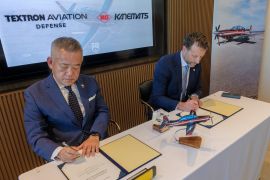Our brothers and sisters at the border have difficulty getting signal, the remaining frequencies will be diverted to expand Internet access.Jakarta (ANTARA) - The Communication and Informatics Ministry is positive that the analogue switch-off (ASO) and the adoption of digital terrestrial television broadcasting are necessary for expanding Internet access in Indonesia.
"Our brothers and sisters at the border have difficulty getting signal, the remaining frequencies will be diverted to expand Internet access," expert staff at the ministry, Rosarita Niken Widiastuti, informed during a webinar on “Information on ASO and Ceremony of Delivery of Assistance for STB Kominfo with Commission I of House of Representatives Central Java” on Monday.
Indonesia is about to enter the digital broadcasting era this year, marked by the switch from analogue to digital broadcasts in the Greater Jakarta area from November 2, 2022.
ASO does not merely denote a change in terrestrial television broadcasting technology, but is also a part of the arrangement of the frequency spectrum—a limited natural resource that is very much needed by the telecommunications world.
According to the ministry's data, Indonesia has 697 television stations. Before the ASO policy, each television station needed one frequency for television broadcasts.
Analogue television broadcasts in Indonesia use up the entire allocation on the 700MHz frequency spectrum. Digital broadcasting, once fully adopted, is expected to make the use of the spectrum more efficient, with one frequency used by 6 to 12 channels.
This will further offer efficiency on the frequency spectrum, or a digital dividend.
The government plans to use the digital dividend from ASO to expedite 4G Internet access because the 700MHz frequency has wide coverage. The digital dividend can also be used to extend 5G coverage.
The government will also use the digital dividend for disaster information dissemination. While setting up their digital television or set-top box, people will be required to enter the postal code of their residence.
They will receive notifications during television broadcasts when a disaster occurs in the area where they live.
The migration from analog to digital television broadcasting is one of the agreements reached by the member countries of the International Telecommunications Union (ITU), a United Nations agency that oversees affairs related to information technology and communication.
Digital broadcasting provides a cleaner picture and clearer sound compared to analog broadcasts.
Related news: Ministry spotlights pros of analog switch-off to several parties
Related news: Analog switch-off to begin with 5 NTT regions
Translator: Natisha A, Mecca Yumna
Editor: Rahmad Nasution
Copyright © ANTARA 2022












